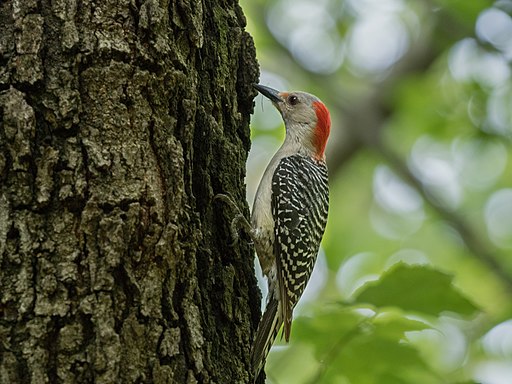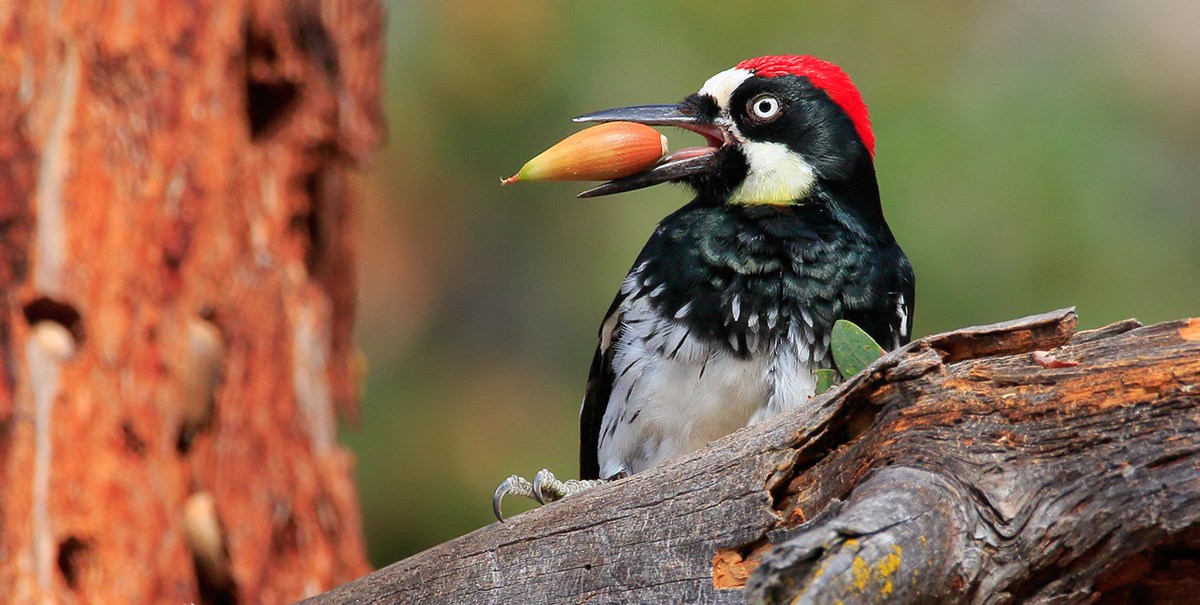Running Into Woodpeckers in Florida Species: Habitats and Behavior
Running Into Woodpeckers in Florida Species: Habitats and Behavior
Blog Article
Woodpeckers: A Comprehensive Overview to Recognizing These Unique Birds
Woodpeckers, with their unique behaviors and physical features, have long mesmerized the curiosity of ornithologists and nature lovers alike. As we discover the elaborate makeup, varied varieties, and environmental significance of woodpeckers, a deeper admiration for these distinct birds and the secrets they hold unravels.

Woodpeckers' Drumming Actions
Woodpeckers show a balanced and exact drumming actions that offers numerous vital functions in their day-to-days live. This actions is mostly related to communication, region protection, and foraging. The unique drumming noise is created by the quick pecking of their beaks versus hard surface areas such as tree trunks, branches, or perhaps metal items.
Communication is a critical facet of woodpecker habits, and drumming plays a considerable function in this process. Woodpeckers utilize drumming to establish their visibility, attract mates, and keep contact with their partners and spawn. The frequency, strength, and duration of drumming sequences communicate particular messages to various other woodpeckers in the location.
Along with interaction, woodpeckers use drumming actions for region defense. Woodpeckers in Florida. The loud and repetitive drumming functions as a cautioning to potential trespassers, signaling that the location is currently asserted. By developing their territory via drumming, woodpeckers lower the probability of conflicts over useful resources such as food and nesting sites
Moreover, woodpeckers also utilize drumming as a foraging technique. The rhythmic pecking aids them locate bugs concealing below the bark of trees by developing vibrations that interrupt the prey's cover-up. This actions showcases the adaptability and resourcefulness of woodpeckers in using their drumming skills for several crucial purposes.
Distinct Adjustments for Tree Climbing
Having grasped the art of drumming to connect, defend territory, and forage, woodpeckers have actually advanced unique adaptations that promote their impressive climbing capabilities in their arboreal environments. One vital adjustment is their specialized feet. Woodpeckers have zygodactyl feet, with two toes directing ahead and 2 toes aiming backwards. This arrangement provides a strong hold on the vertical surface areas of trees, permitting them to stick effortlessly while foraging for pests or drumming. In addition, woodpeckers have stiff tail feathers that act as a prop to support their bodies as they climb. These tail feathers offer stability and balance, making it possible for woodpeckers to maneuver up tree trunks with accuracy and dexterity.
Additionally, woodpeckers have powerful neck muscles and an unique skull framework that aid in their climbing up capacities. Their solid neck muscle mass allow them to rapidly eat tree bark without experiencing whiplash, while their thick head and little brain serve as shock absorbers, shielding them from the influence of repeated drumming. These adaptations jointly allow woodpeckers to navigate the upright globe of trees with effectiveness and elegance.

Role of Woodpeckers in Environments
By foraging for pests under the bark of trees, woodpeckers aid manage pest populations, avoiding break outs that can damage the general health and wellness of the woodland. Furthermore, woodpeckers produce cavities in trees that serve as crucial nesting sites for a range of other bird species, promoting biodiversity within the ecosystem.
Moreover, the drumming and articulations of woodpeckers play an essential function in communication and territory facility. These audios not just offer to draw in mates yet likewise assist define borders between different woodpecker regions, minimizing problems and advertising a harmonious conjunction within the woodland community. On the whole, the visibility of woodpeckers in forest communities highlights their importance as keystone varieties, influencing the characteristics and functioning of these environments in diverse means.
Composition: Specialized Beaks and Feet
In the intricate web of woodland ecosystems, the specialized beaks and feet of woodpeckers are crucial adjustments that allow them to meet their vital eco-friendly roles. Woodpeckers possess one-of-a-kind anatomical functions that are especially designed to help them in their foraging and nesting actions.
The most unique attribute of woodpeckers see this website is their strong, chisel-shaped beaks. These beaks are perfectly adapted for drilling into timber to reveal insects, larvae, and sap concealed under the bark of trees. The strong muscles and strong framework of their beaks allow woodpeckers to peck at a price of approximately 20 times per secondly without causing damage to their skulls.
Furthermore, woodpeckers have actually specialized feet that help in their acrobatic climbing up abilities. Their feet have two toes directing onward and 2 toes aiming backward, offering a strong hold on upright surface areas (Woodpeckers in Florida). This unique foot setup, in addition to tight tail plumes that act as a supportive prop, allows woodpeckers to hold on to tree trunks and branches easily while they search for food or excavate nesting cavities
Woodpecker Species Diversity
Woodpeckers are a diverse team of birds discovered across numerous environments worldwide, with over 200 well-known species displaying adjustments to various atmospheres. Woodpeckers have advanced to populate a range of atmospheres, from forests and timberlands to grasslands and deserts, each offering special challenges that have actually influenced the advancement of unique woodpecker species.
One more contributing factor to woodpecker varieties diversity is their specialized feeding actions. Different varieties have progressed to exploit numerous food sources, such as bugs, tree sap, fruits, and nuts, leading to the next development of certain adaptations in my response beak shape, dimension, and strength. These adjustments enable woodpeckers to forage effectively in their respective habitats, lowering competition amongst types and promoting specific niche distinction. Furthermore, geographical seclusion and historical aspects have actually played a function in forming the circulation and diversity of woodpecker types, bring about the broad variety of specialized adjustments seen in these fascinating birds.

Conclusion
In conclusion, woodpeckers are fascinating birds that show special drumming habits, specialized adjustments for tree climbing, and play crucial roles in ecological communities. Their composition, including specialized beaks and feet, permits them to flourish in their setting. With a diverse series of woodpecker varieties discovered worldwide, these birds are important for keeping the health and wellness and equilibrium of forests and timberlands. Understanding and valuing the complexities of woodpeckers can give important understandings right into the natural world.
Report this page